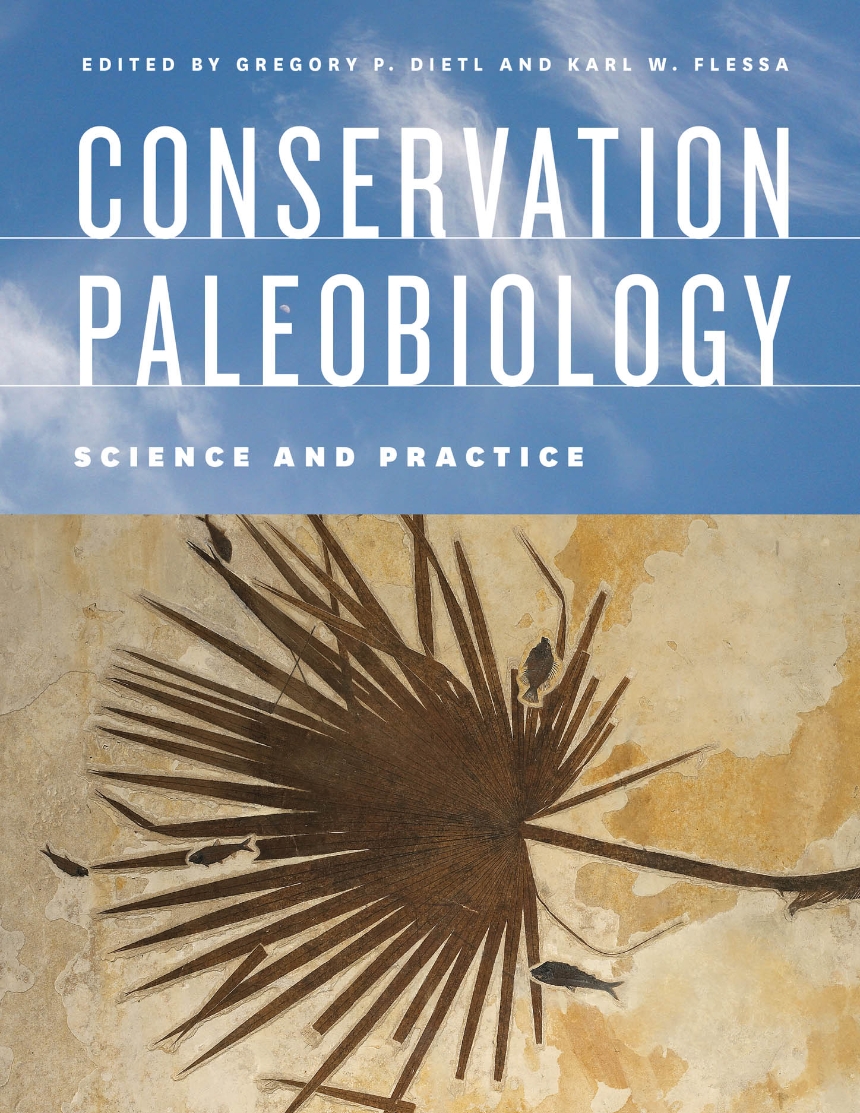Conservation Paleobiology
Science and Practice
Studying endangered species is difficult. They are by definition rare, some exist only in captivity, and for those still in their native habitats any experimentation can potentially have a negative effect on survival. Moreover, a lack of long-term data makes it challenging to anticipate biotic responses to environmental conditions that are outside of our immediate experience. But in the fossil and prefossil records—from natural accumulations such as reefs, shell beds, and caves to human-made deposits like kitchen middens and archaeological sites—enlightening parallels to the Anthropocene can be found that might serve as a primer for present-day predicaments. Offering both deep-time and near-time perspectives and exploring a range of ecological and evolutionary dynamics and taxa from terrestrial as well as aquatic habitats, Conservation Paleobiology is a sterling demonstration of how the past can be used to manage for the future, giving new hope for the creation and implementation of successful conservation programs.
336 pages | 60 halftones | 8 1/2 x 11 | © 2017
Biological Sciences: Conservation, Ecology, Paleobiology, Geology, and Paleontology
Reviews
Table of Contents
Foreword by Thomas E. Lovejoy
Introduction
Section One: Conservation Paleobiology in Near Time
1. The youngest fossil record and conservation biology: Holocene shells as eco-environmental recorders
Michał Kowalewski
2. Conservation biology and environmental change: A paleolimnological perspective
John P. Smol
3. Vertebrate fossils and the future of conservation biology
Elizabeth A. Hadly and Anthony D. Barnosky
4. Paleoecology and resource management in a dynamic landscape: Case studies from the Rocky Mountain headwaters
Stephen T. Jackson, Stephen T. Gray, and Bryan Shuman
5. Historical ecology for the paleontologist
Jeremy B. C. Jackson and Loren McClenachan
6. The isotopic ecology of fossil vertebrates and conservation paleobiology
Paul L. Koch, Kena Fox-Dobbs, and Seth D. Newsome
7. Evaluating human modification of shallow marine ecosystems: Mismatch in composition of molluscan living and time-averaged death assemblages
Susan M. Kidwell
8. Using a macroecological approach to the fossil record to help inform conservation biology
S. Kathleen Lyons and Peter J. Wagner
Section Two: Conservation Paleobiology in Deep Time
9. Seven variations on a recent theme of conservation
Geerat J. Vermeij
10. Metaphor, inference, and prediction in paleoecology: Climate change and the Antarctic bottom fauna
Richard B. Aronson
11. Ecological modeling of paleocommunity food webs
Peter D. Roopnarine
12. Paleobiology and the conservation of the evolving web of life
Gregory P. Dietl
13. Speciation and shifting baselines: Prospects for reciprocal illumination between evolutionary paleobiology and conservation biology
Warren D. Allmon
Section Three: Conservation Paleobiology at Work
14. Putting the dead to work: Translational paleoecology
Karl W. Flessa
15. Conservation paleobiology roundtable: From promise to application
Alison G. Boyer, Mark Brenner, David A. Burney, John M. Pandolfi, Michael Savarese, Gregory P. Dietl, and Karl W. Flessa
Epilogue: Conservation Paleobiology in the Anthropocene
Contributors
Acknowledgments
Index
